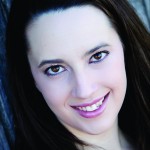—by Anamae Anderson and Marilyn B. Dodson
It’s 4:30 on a Saturday morning, and the city is quiet. Most sane people are still in bed. The sky is dark, and the sun has yet to peek above the horizon. It is the calm before the storm.
In a matter of hours, hundreds will gather here for a massive 143-harp concert in the Tabernacle on Temple Square in Salt Lake City. The performance is the result of the collaboration of 15 dedicated harp teachers with one vision: to bring together Suzuki harp students in Utah to celebrate the joy of music and create a unique sense of community across all levels, ages, and studios.
As teachers, we’ve all worked tirelessly on our parts, choosing repertoire, making rehearsal recordings, writing narration, directing rehearsals, communicating with parents, and making sure every student is prepared. Sometimes the effort involved felt like it was too much and we swore we’d never undertake something so insane again. Then the big day arrived and we worried that all those hours of preparation might not be enough.
4:45 a.m. West Temple, normally one of the busiest streets in Salt Lake City, only sees a few cars at this hour. However, today is different. This quiet thoroughfare is about to see a small army of harpists arrive with a fleet of 143 harps in tow. We and a few other teachers arrive with the first wave of harps. It takes us nearly an hour to prepare for the rest of the student harp arrivals. We post directional signs, and color code everything to make sure everything and everyone ends up in the right place.
5:30 a.m. Harpmobiles begin to trickle into the west side of historic Temple Square. How is it that the students who live the furthest away are always some of the first to arrive? One by one, 143 harps are carefully unloaded and rolled into the building. A crew of teachers and parent volunteers shepherd each harp in the right direction. Before approaching the stage, each harp is uncovered and labeled, along with accompanying benches, covers, and foot stools, with a colored dot that corresponds to the colored section on the stage where it belongs. Why the colored dots? With an event of this size, we have learned the hard way that harps and gear can easily go home with the wrong harpist if not properly labeled.
6:00 a.m. Teachers start tuning harps as they are placed on stage. Have you ever wondered how long it takes to tune 5,678 harp strings? We found out. Ten teachers can accomplish this task in about two to three hours, provided the students remembered to tune their instruments at home before arriving and there aren’t too many broken or missing strings to change.
9:00 a.m. Three and a half hours later all the harps are finally unloaded, tuned, and in place on stage. Time to rehearse! This is the first (and only) time all 143 harpists are together for a rehearsal. Hopefully all of the studio and regional rehearsals over the last six months pay off. The acoustics in the tabernacle present an interesting challenge. You can only hear the harps in your direct vicinity, and it is difficult to hear the lead harps out front. We embed teacher harps among the sea of students, but this is still not enough, so out comes the conductor’s podium. It’s important to note that this concert is not the first rodeo for this group of teachers. Today’s performance is easily the fifth of this magnitude we have put together, but with each new venue come new complications. We forgot to determine in advance which of the 15 teachers would actually conduct each piece in the concert. So we are now simultaneously rehearsing students and moving to various harps or conductor locations on stage. Next time we perform in this venue, we will be better prepared!
11:15 a.m. Is it lunch time yet? Thankfully, one of our marvelous parent volunteers went out and bought lunch for all of the teachers. We have 30 minutes to recharge before jumping back into rehearsal.
11:45 a.m. Time to rehearse “Seguidilla.” All of the students get to participate for this piece. If they don’t know how to play the piece, they get to tap on the board. This piece is always a crowd favorite and we often feature it on our ensemble concerts.
2:00 p.m. As if 143 harps weren’t enough on stage, 12 cellists arrive to rehearse an arrangement of “The Swan” with the harp ensemble.
3:00 p.m. Last check for tuning and broken strings. The students all congregate downstairs to finish getting ready for the concert.
3:20 p.m. It’s almost time to go on stage for a group picture. The students are all crammed behind stage waiting to go on. It’s hot. All of the teachers are worn out from the early morning arrival and the day’s grueling schedule. Yet you can’t help but feel the pulsating energy and anticipation in the air.
3:30 p.m. All those hours of preparation now feel worth it as the students walk on stage. From backstage the teachers look out over a sea of sparkling harps. Each student dressed in black and white with a bright red hair bow or sash. Hair done, preparation complete, we feel the excitement radiating from each harpist on the stage. The magical moment before the concert begins—this is what gives meaning to all of the planning, rehearsals, and meetings.
4:00 p.m. Show time. The lights come on, the cameras roll, and beautiful music pours forth from the stage. Yeah, we’re definitely going to do this again. •


Anamae Anderson (right) and Marilyn Dodson (left) are two of the 15 Utah teachers who worked together to create this concert. They both teach privately in Utah County.









